Ford Mustang (1999-2004) Service Manual: Fuel Charging Wiring Harness
Removal and Installation
WARNING: Do not smoke or carry lighted tobacco or open flame of any type when working on or near any fuel related components. Highly flammable mixtures are always present and can ignite. Failure to follow these instructions can result in personal injury.
1. Disconnect the battery ground cable.
2. Remove the exhaust gas recirculation (EGR) valve and the exhaust manifold to EGR valve tube. For additional information, refer to Section.
3. Remove the bolts and the LH ignition coil cover.
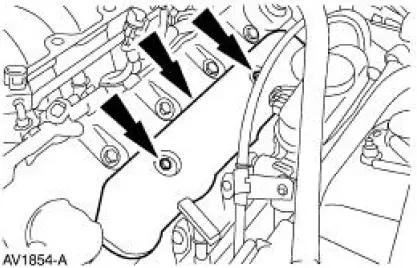
4. Disconnect the LH ignition coil electrical connectors.
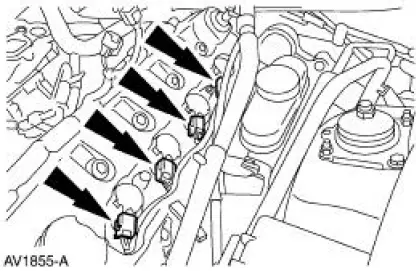
5. Disconnect the barometric pressure (BARO) sensor electrical connector.
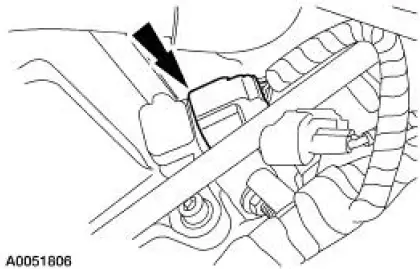
6. Remove the PCV valve.
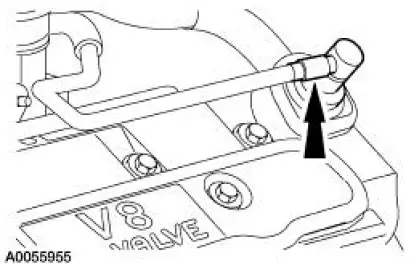
7. Disconnect and remove the PCV hose.
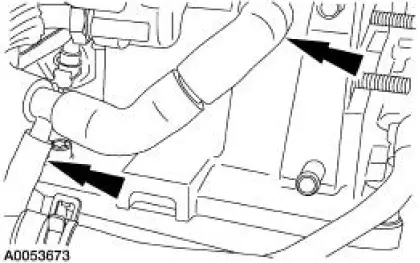
8. Disconnect the camshaft position (CMP) sensor electrical connector.
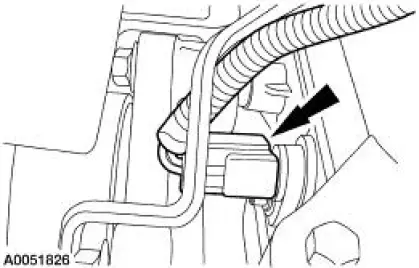
9. Disconnect the engine coolant temperature (ECT) sensor electrical connector and unclip the harness from the stud.
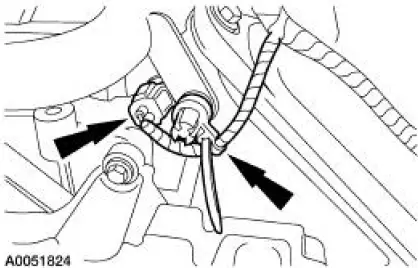
10. Remove the fuel charging wiring harness bracket bolt.
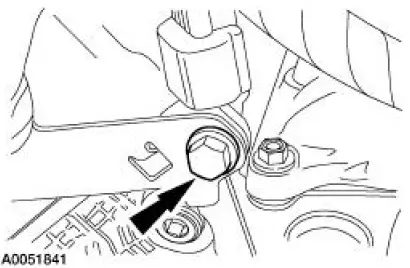
11. Disconnect the following:
- The 42-pin engine bulkhead electrical connector.
- The 16-pin electrical connector.
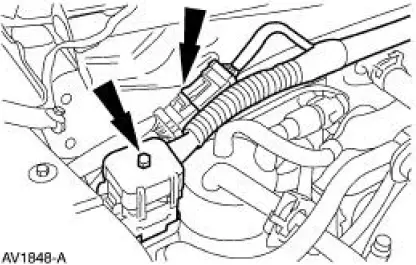
12. Separate the wiring harness from the dash panel.
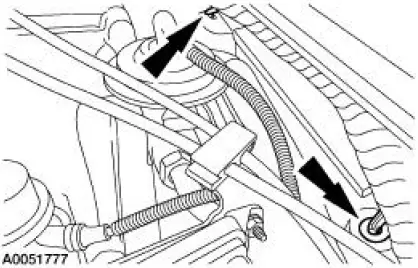
13. Remove the air cleaner outlet pipe. For additional information, refer to Section.
14. Disconnect the throttle position (TP) and the idle air control (IAC) valve electrical connectors.
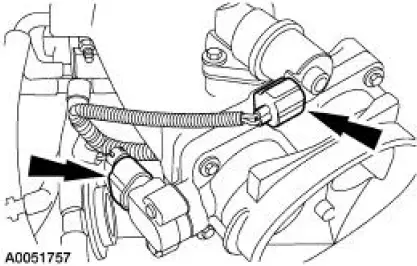
15. Disconnect the accelerator cable, and if equipped, the speed control cable.
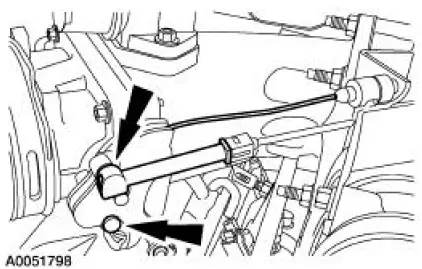
16. Remove the nuts and the throttle body spacer assembly.
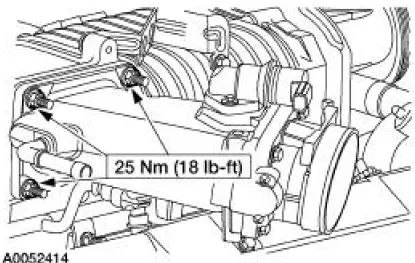
17. Remove the bolts and the RH ignition coil cover.
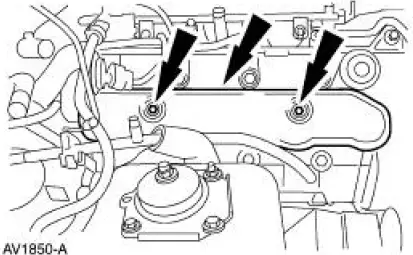
18. Disconnect the RH ignition coil electrical connectors.
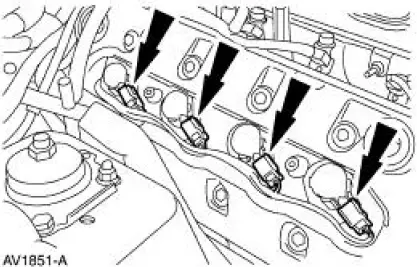
19. Disconnect the transmission main control harness electrical connector.
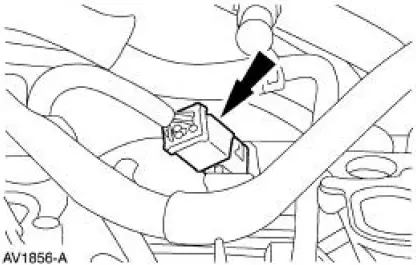
20. Raise and support the vehicle. For additional information, refer to Section.
21. Disconnect the RH heated oxygen sensor (HO2S) electrical connector.
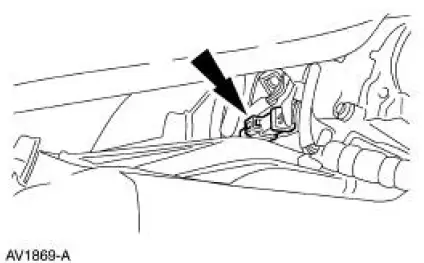
22. Disconnect the crankshaft position (CKP) sensor electrical connector.
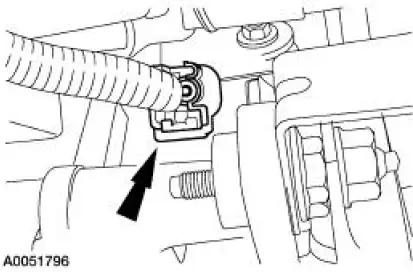
23. Disconnect the air conditioning compressor electrical connector.
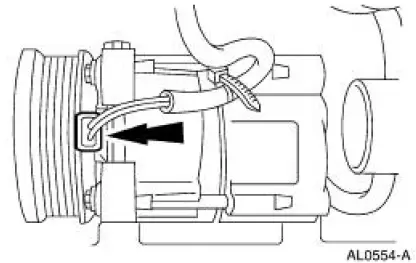
24. Unclip the harness from the bracket.
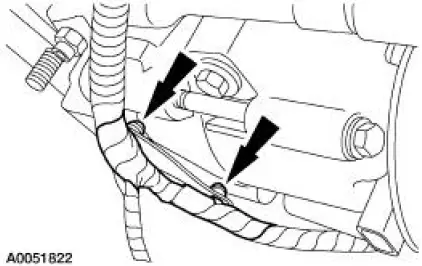
25. Lower the vehicle.
26. NOTE: LH side shown, RH side similar.
Disconnect the two radio ignition interference capacitor electrical connectors.
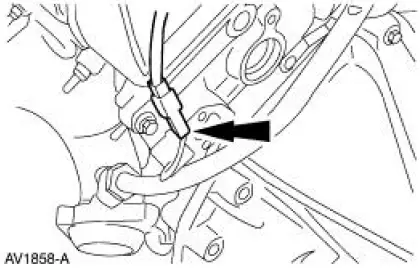
27. Disconnect the eight fuel injectors
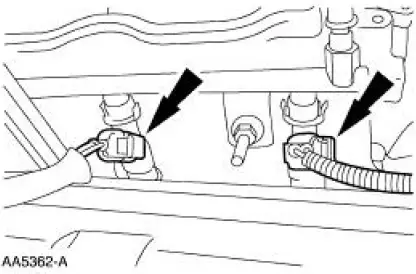
28. Separate the harness from the fuel supply manifold studs in four places and remove the fuel charging wiring harness from the vehicle.
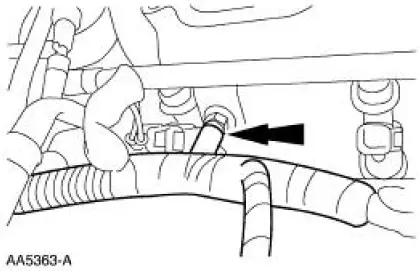
29. To install, reverse the removal procedure.
 Throttle Body
Throttle Body
Removal and Installation
WARNING: Do not smoke or carry lighted tobacco or open flame of any
type when
working on or near any fuel related components. Highly flammable mixtures are
always present
an ...
 Fuel Injection Supply Manifold and Fuel Injector
Fuel Injection Supply Manifold and Fuel Injector
Material
Item
Specification
SAE 5W-20 Premium Synthetic
Blend Motor Oil
XO-5W20-QSP
WSS-M2C153-
H
Removal and Installation
WARNING: Do not smoke or carry lighted tobacco or op ...
Other materials:
General information
WARNING: Driving while distracted can result in loss of vehicle
control, accident and injury. Ford strongly recommends that drivers
use extreme caution when using any device or feature that may take their
focus off the road. Your primary responsibility is the ...
Throttle Body
Removal and Installation
WARNING: Do not smoke or carry lighted tobacco or open flame of any
type when
working on or near any fuel related components. Highly flammable mixtures are
always present
and may ignite. Failure to follow these instructions may resul ...
Oil Pump Screen and Pickup Tube
Removal and Installation
1. Remove the oil pan (6675). For additional information, refer to Oil
Pan in this section.
2. Remove the oil pump screen cover and tube (6622) and discard the gasket.
1. Remove the nut.
2. Remove the two bolts.
3. Remov ...
